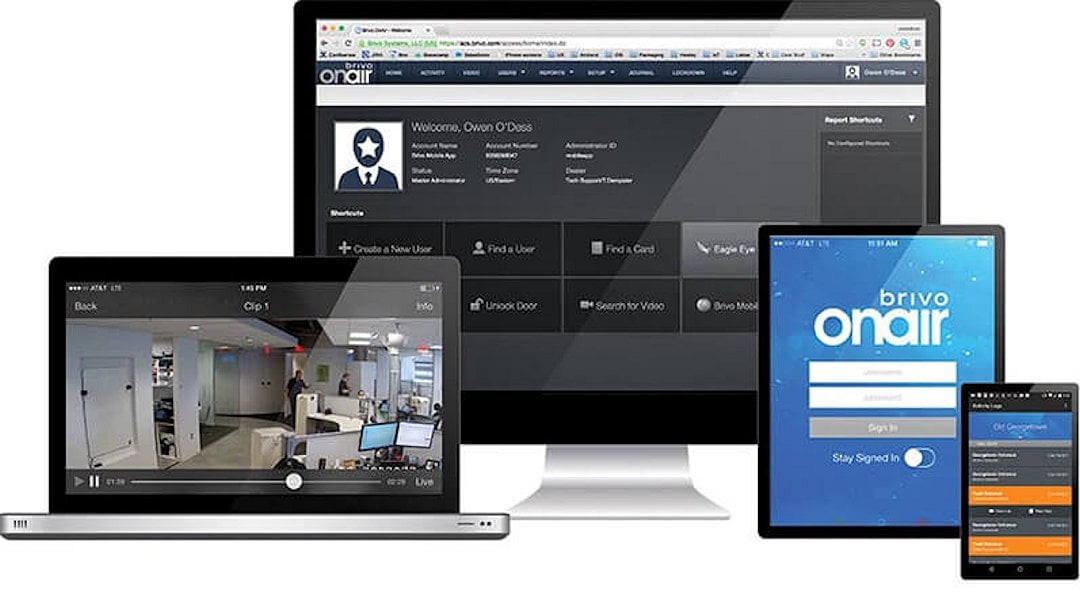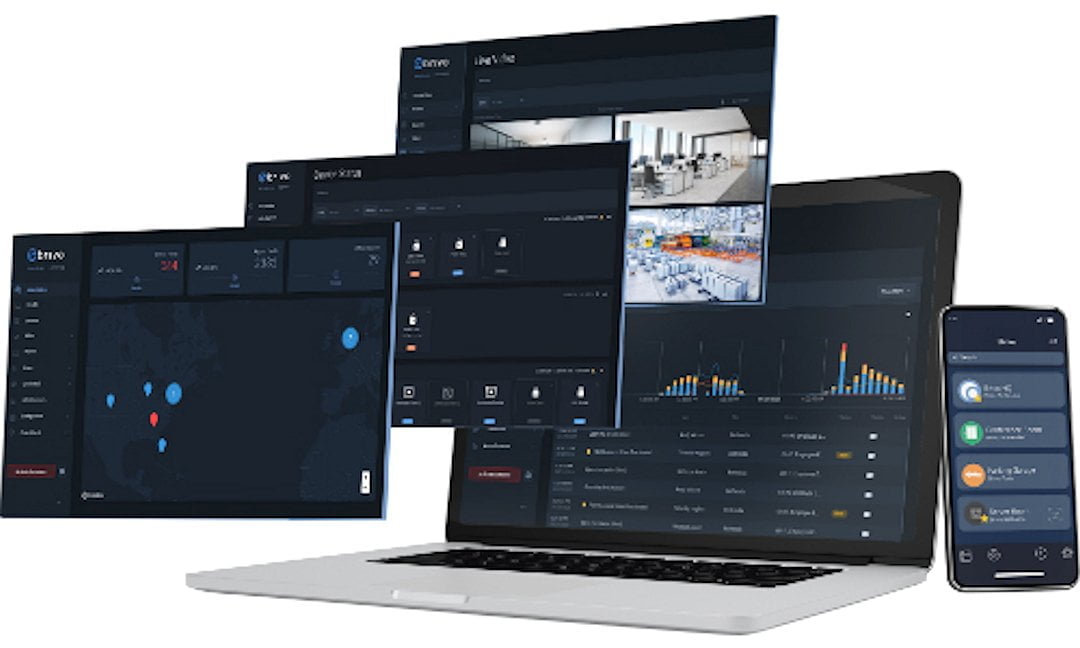Challenges of Cloud Access Control
Challenges of Cloud Access Control – In this Q&A, John Adams speaks with John Szczygiel of Brivo about the benefits, challenges and future of cloud access control.
JA: What are the advantages of access control when compared with traditional access solutions? How do they benefit installers, how do they assist end users?
JS: Traditional access solutions played a big part in ensuring the right people are at the right place, and at the right time, but changing demands meant these solutions needed to evolve – this is where cloud access control comes in to fill the gap.
Cloud-based access allows users to manage access to facilities from anywhere, at any time, and on any device from computers to smartphones. End users immediately benefit from the time saved from needing to physically be on-site at a facility to give or revoke access, to track who has keys and for which doors, or chase down third-party vendors with keys or fobs.
For installers, cloud-based solutions eliminate the use of local servers and software, which would reduce truck-rolls as the software can be remotely managed and where updates and security patches can be pushed out via the cloud. While access solutions are often implemented with security in mind, businesses also get to reap a slew of long-term ancillary cost-saving benefits.
These include reduced staff overheads and other on-premises expenditures such as reduced energy costs associated with maintaining and cooling servers, and the ability to make cost saving decisions for energy use. Cloud-based systems provide a wealth of data for users to tap into, to analyse and optimize their space use and energy consumption. One example is knowing when to use less heating or cooling within areas in a facility that receive little traffic.
Adopting access control-as-a-service will also greatly reduce the workloads of IT teams today, who are already strapped with day-to-day responsibilities. With cloud access control solutions, managing the software or hardware, especially across multiple facilities can be left to the installers who can manage this from end-to-end. Time and resources are of the essence and dedicating more employees to these tasks can take time away from high-value work.
Cloud access control is also easier to scale, whether that’s adding more users or adding more sites depending on the growth. Multi-site businesses also require multi-site software upgrades, unless they’re using a cloud-based solution. In short, access control can save money, time, and human resources. This creates a source of recurring revenue for installers, who benefit from remotely managing the entire process, including automatic firmware updates, customer onboarding, new integrations, and features upselling and more efficient support without the truck-roll.”
JA: In your experience, what do end users love most about your cloud-based access control solution – what are the key pieces of functionality that delight them?
JS: End users love our cloud-based access control solutions because of:
* The platform’s simplicity and the convenience to enable and manage people flow within facilities, such as the office where a hybrid workforce is here to stay, remotely and from any device.
* The ability to collect system related data to improve security policies and procedures, understand space utilization and reduce costs such as energy use across a facility and other on-premises related cost savings.
JA: Is cloud access control more of an operating expense than a capital expense – and is it cheaper than traditional access control footprints?
JS: SaaS solutions of any kind mean moving from a capital expense to an operating expense, and that means outgoings are more predictable and require less planning. Traditional access solutions would require big investments every few years to upgrade and stay up-to-date, this is minimized with a cloud solution.
JA: What are the limitations of cloud access solutions?
JS: The limitations of cloud access solutions can be found in any other access control solution. There is always a human element that is unpredictable and can only be addressed with policies and training. It’s similar to other types of security—you can have the most impenetrable system in place to defeat hackers but it doesn’t matter if people put their password on a sticky note and attach it to their monitor. If people share credentials, or hold open doors, or even wedge a door open for convenience, that’s going to limit the effectiveness of any security system. A certain amount of training and adherence to policy is always going to be necessary, no matter how advanced the access control system is.

JA: Given their dependence on networks that are not always reliable for a wide range of reasons, how dependable have you found your cloud access control solutions in the field – does their distributed architecture make them ideal for these applications, in your opinion?
JS: There is the age-old perception that a solution is less reliable if it’s hosted and delivered via the cloud. This might’ve rung true in the past, but cloud systems have made progress by leaps and bounds today to increase uptime and reliability.
Even in the face of disruptions with cloud networks, redundancies, or the duplication of the critical components or functions of the access control system are built into the software. This allows the system to operate even while offline, allowing people to access or leave a facility as they need. In the event of a power failure, there are also redundancies in battery back up to ensure no downtime, regardless of whether the system is distributed or not.
JA: How vital is it for integrators installing cloud-based systems to have retain IT capability in-house to resolve the small things that can sometimes trip organic cloud? Or is it possible to build those checks and balances into cloud solutions?
JS: Cloud solutions should be simple and straightforward for all. There will be new ways of working involved, but not to the extent of needing retained IT capabilities in-house to make a solution work.
At the end of the day, this is what makes the cloud solutions the go-to choice for integrators and end users as it’s delivered as-a-service. The user interface is kept simple so anyone can manage the system with minimal training. This is a key way to work and is here to stay, as firms struggle to find technical staff to maintain systems.
At Brivo, our solution is plug and play (PnP). We believe this PnP model will become a critical consideration for installers selecting an appropriate solution going forward.
JA: How pervasive will cloud-based systems be in the future? Will they dominate, or will we see a hybrid market?
JS: As digital transformation continues to unfold across all aspects of an organization, we believe cloud-based systems will be a dominant form of delivery in the future. In the short-term, we should expect a hybrid market with different systems needing to coexist as on-prem solutions are required in specific circumstances, but cloud will remain a dominant force.
JA: Some security integrators feel cloud access control applications are complex – is this true?
JS: Cloud access control applications can seem complex as the amount of data has increased exponentially within robust access controls today. Moving to the cloud would often also involve new approaches, new ways of working and technology solutions, adding to the so-called complexities.
But cloud-based access controls are meant to simplify access control, and to remove the on-prem logistical complexities from storage to maintenance. While there will be shifts in ways of working, these should be viewed as a welcome change rather than one to avoid.
Getting connected to the cloud is far more straightforward, and the interconnected API economy has benefited greatly from cloud computing. Integrations, which are key in access controls, can also easily be connected in a cloud infrastructure. Data and video storage is also limitless there. Cloud-based solutions eliminate the use of local servers and software, which would in turn reduce truck-rolls as the software can be remotely managed and where updates or security patches can be pushed out via the cloud.
JA: A consideration for integrators is concerns around ensuring distributed intelligence – how can they select cloud solutions that offer the reliability and performance benefits of distributed intelligence, while leveraging the remote management, maintenance and monitoring benefits of cloud?
JS: There are plenty of utility benefits to reap from distributed intelligence systems. In the case of cloud-based access systems, it becomes a case of having a consistent flow of aggregated data from fragmented sources. These data points are critical in helping organizations make informed decisions, resolve faults, predict needs and improve other safety policies. Being able to access them quickly and reliably is key.
Some considerations in the selection process include having visibility within one platform, or the availability of advanced analytics like artificial intelligence (AI) to power solutions with anomaly detection. For example, the AI can pick up abnormal behavioral patterns to determine ‘out-of-norm’ activities, even in an acceptable access activity and alerting end users.

JA: Is there a size limit to cloud security applications in terms of doors managed or cardholders supported?
JS: No, there’s no such limit. Any expansion of a security network using cloud-based solutions does, however, need to be underpinned by adequately trained IT staff and IT infrastructure.
JA: When it comes to cyber security, what are the important aspects to cover off – must a cyber security standard be applied to a user’s data network, or can a cloud access control system be secured independently?
JS: Cyber security should be a critical consideration in the process of purchasing access management technology. Unsecure access management hardware or systems can be compromized and used as a foothold to hack into wider corporate networks with potentially catastrophic results.
To evaluate the cyber security of a particular access management vendor, installers can seek out audit statements to check that the vendor is making appropriate levels of investment into its cyber security. Any vendor who takes its cyber security seriously will use trainers who understand the topic and can advise current or prospective installers on the ways to ensure that it is installed and maintained in a cyber secure way.
Trust is key to delivering our solutions and we’ve made huge investments in our cybersecurity to cement that. We’re SOC 2® Type 2 certified, as part of its technical auditing process to ensure we’re putting effective safeguards in place to protect our users, and have been over the last decade. We take the Zero Trust approach to connecting our IoT edge devices in the cloud and with end user devices. We also have bot detection on our IT edge devices to detect bot attacks.
JA: How easy is it to integrate access control events and CCTV video clips in a cloud environment? Typically, what would the procedure be to achieve this?
JS: Unifying cloud-based access control with video surveillance is an optimal solution to monitor video streams across one or multiple premises at the same time, to ensure set access events are actioned on to keep facilities safe. Bridging the gap between access control and video surveillance can easily be achieved if both solutions are complementary and can integrate with each other. Both solutions should be integrated into a single platform so end users won’t have to alternate between platforms to access event data and reliable visibility.
At Brivo, videos are integrated into our solution and within an event tracker. Users can see the videos associated with the access event within the same platform and in one click.
JA: How important is a reliable, fast network for modern cloud access control – is it vital, or can the latest systems make do with modest bandwidth in most applications?
JS: It’s important to remember that bandwidth requirements depend on the individual access control applications being used. A control panel, for example, should have a virtually unnoticeable effect on a Local Area Network (LAN) environment. Whereas a security camera will require more bandwidth depending on the required picture quality of a video feed.
Organizations should factor their bandwidth capabilities into their access control network. And if in doubt, a good access management vendor will offer tailored consultation on leveraging the right solutions in the right context to ensure success.
#SEN #SENnews #security #electronics






